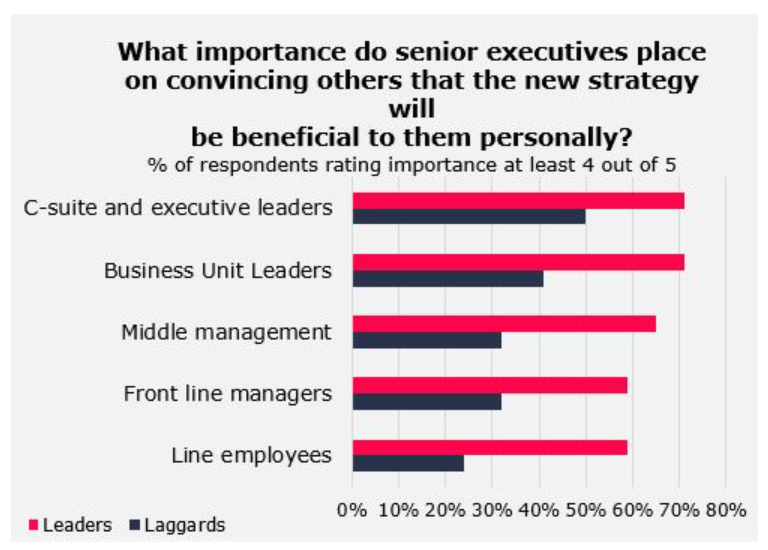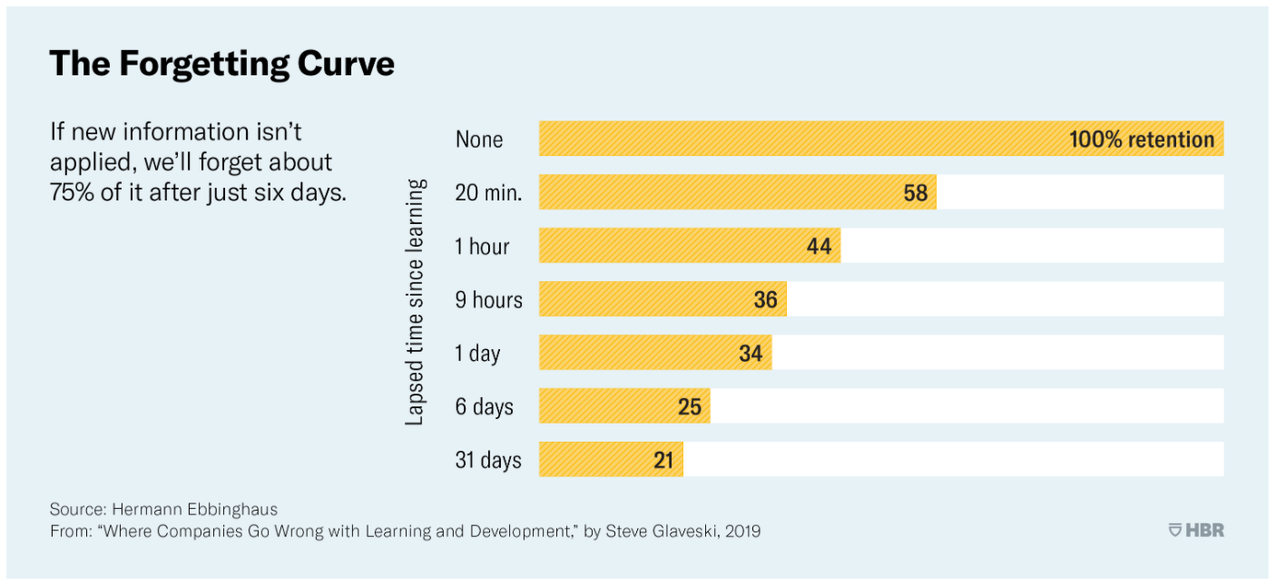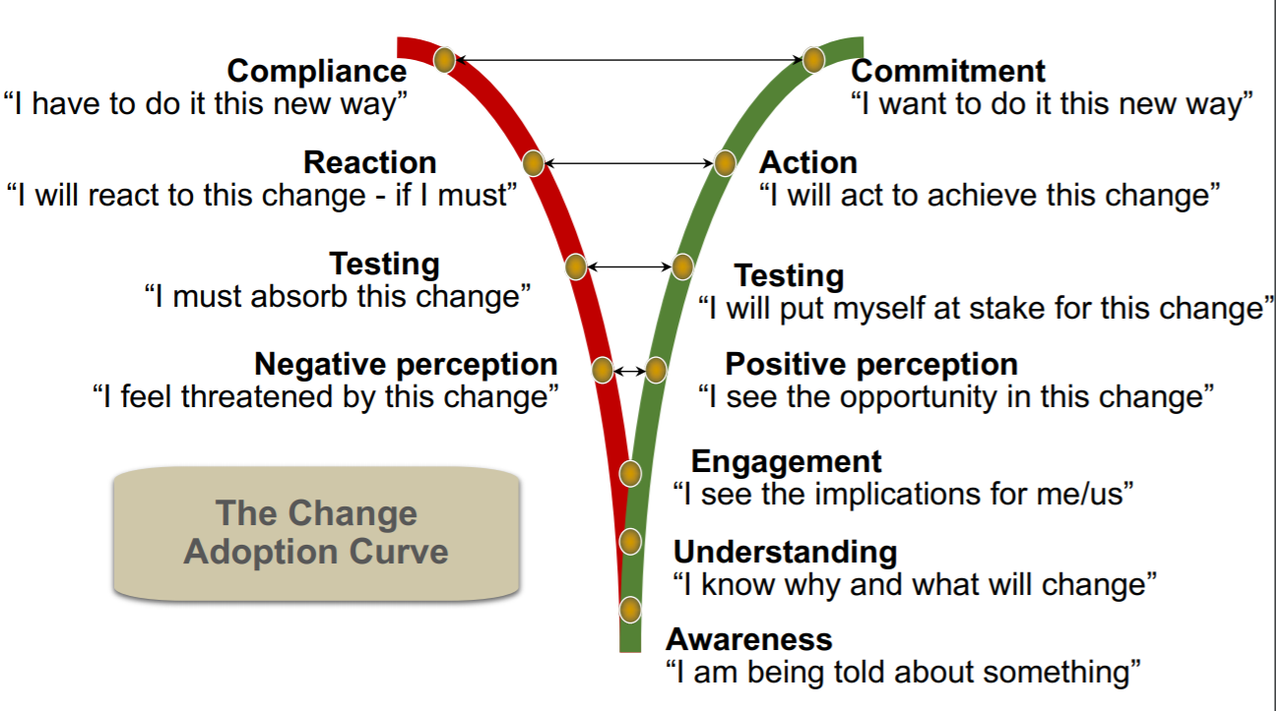
If you tend to ace either strategy or execution — but not both — well, you’re not alone. Only 8% of business leaders excel at both.

Source: Harvard Business Review
35% of leaders struggle to keep their company on track with their business strategy.
As you cast your vision and plan your strategy in 2021, you’ll want to know exactly how to make those operational goals a reality. Take a high-level strategy, and translate it into daily tasks with these steps.
Make operational goals more actionable
Assess your current strategy for achievability. If your team can’t execute the operational objectives you set, your team isn’t the problem. But don’t wait to find that out.
Analysts at consulting firm BTS have found that among underperforming companies, twice as many executives (32%) say they are concerned about their company’s ability to execute their strategy. That’s in contrast to just 16% of top performers who expressed the same concern.
How do you know your strategy is executable? Read up on how to set smarter, longer-term operational objectives. There, you’ll find a quick checklist to guide you:
How to make your strategy easy to execute
- • Use only one goal-setting framework. Resist the temptation to adopt OKRs (objectives and key results) while simultaneously working toward S.M.A.R.T. (Specific, Measurable, Assignable, Realistic, and Time-specific) goals, for example.
- • Involve employees. Consult the people who will be executing the operational plan every day. Do they feel their objectives are doable?
- • Use short-term business objectives to support long-term ones. Don’t let the two types of operational goals compete or, worse, cannibalize each other. Ensure that every short-term goal serves the overarching business strategy.
- • Ensure that goals align with your mission and values. If they don’t, simply adjust or replace them.
- • Hire an outsider to assess your operational capability. A consultant has a perspective you don’t and can objectively analyze your action plan’s executability.
- • Include financial metrics in operational KPI’s. A good CFO will tell you whether you can afford your ambitions. They can also tell you the financial benefits of achieving (and costs of missing) each goal.
- • Record what won’t get done. Quantify opportunity cost and accept it.
- • Specify who will do what, and when. That way, when it’s time to execute, your teammates won’t be dropping balls or bumping into one another.
- • Map milestones you expect to hit. Since 1985, experts at Harvard Business Review have recommended event-based milestones, not chronological ones. List foreseeable landmarks, and use them to assess and inform your decision-making.
Use organizational change-management to hit operational goals
You won’t achieve anything if you operate as you always have. In other words, long-term success means organizational change. And for that, look to the applicable, progressive steps of John P. Kotter’s classic change management.
Ignite — and maintain — a sense of urgency
For the most profitable outcome, teammates must believe strategy execution will better them personally.
Data from research produced by the Economist Intelligence Unit shows that businesses that emphasize a teammate’s personal gains outperform businesses that don’t. “Transformation of an enterprise begins with a sense of crisis or urgency,” IBM’s former CEO and chairman, Louis Gerstner Jr., said in a Harvard Business School presentation. Gerstner arrived at the company in 1993 and saw its strategy was stagnated because of a lack of focus and urgency.
He ignited the belief there was a problem, and immediately the company’s lofty goals began materializing into results.

Source: MacroTrends — IBM’s 58-year stock history
To do this in your own business, simply take a flat or stagnant performance indicator (like in IBM’s case, their 1970-1993 stock value), and use any software program to project it linearly into the future. The visual may hurt to look at. But remind team members that it’s their choice: The trend can continue until the business fails, or, together, you can change it. Title the chart something like “the end ... or the beginning.”

Source: The Economist Intelligence Unit and BTS Group
Activate internal leaders
Next, create a persuasive, guiding coalition to motivate teams so managers don’t dictate the plan top-down.
Recently, the United Way of Dallas endeavored to raise more money.
To achieve their strategic objectives, leaders knew it would take internal motivation at every level.
They invited employees to “apply” to their Guiding Coalition. The group was composed of people who usually worked toward separate performance metrics but who, for this particular goal, rallied to mobilize their own teammates toward this one collective desire.
In the end, the United Way of Dallas exceeded their goal. Even more exciting, though, is what they learned: how to tackle and achieve their highest aspirations. The organization now applies the same process to new goals for a constant cycle of improvement in any area they choose. This year’s “TBO” (the big opportunity) is to combat systemic racism and advance regional racial equity. No simple feat. But the organization’s leaders know that internal micro-influencers are the key. Applications are open for the group’s new, soon-to-be-famous guiding coalition.
Make a mantra for daily interactions
Your strategic plan needs constant employer-to-employee communication. This messaging must include two parts: a mantra and an application.
A good mantra sums up the goal and how that goal fits into your mission and values.
“Glad to be here” is the Blue Angels’ mantra. Dyson uses “Solving problems that others ignore” internally to remind employees of their shared goal — even before talent arrives — in job postings.
Your strategy’s mantra can even be cheeky. Today, Mark Zuckerberg’s famous phrase “Move fast and break things” is dismissed as childish and shortsighted. But at the time, it worked to achieve Facebook’s ambitious growth goals. It gave employees permission to experiment, which let them develop the unparalleled technology they used to dominate their market. And look — a mantra isn’t a permanent motto. Facebook has evolved its mantra again and again to reflect new, strategic operational goals.
Second, your internal messaging needs a practical application. Make each application team-specific so the mantra unifies and distinguishes every department or group. To illustrate, let’s take the Container Store’s 2017 mantra, “Air of Excitement.” Their sales team could customize the saying to “We create the Air of Excitement,” while the customer care team could repeat to themselves, “We’re the keepers of the Air of Excitement.”
Once you choose your strategy’s mantra and each team applies their own (approved) spin, work it in everywhere.
Use your mantra in memos, meetings, posters, email signatures, the intranet, and everywhere else you see the opportunity.
Enable and equip employees
To execute your strategy, outfit workers with all the resources, tools, and skills they need. Mix mandatory training with optional training to see who’s most interested — and learn why those teammates care so much. Then, replicate those successes with other departments or groups to maximize participation in the plan’s execution.
As you devise training, don’t do it on your own timetable — wait until conditions are ripe for team members to apply their learnings. Otherwise, as experts at the Harvard Business Review point out, your people will forget what they learned.

Source: Hermann Ebbinghaus via Harvard Business Review
Celebrate both recorded and undocumented achievements
Over six decades ago, HBR published a now-famous article about employee motivation, where progress ranked more effective than rewards or recognition. More recent research confirms their findings.
According to HBR, only 5% of leaders know what truly motivates workers (hint: it’s progress).
Your ability to notice progress toward operational goals will directly affect how long and how unswervingly your people stick to the course.
Some wins will be baked into your strategy (see above, “map milestones”). Other victories will be wholly unanticipated. Your guiding coalition team will keep an eye out for indications that the team is making strides toward your strategy’s success. For example:
Signs your on track with your strategy
- • A customer casually mentions they’ve noticed a change
- • Your KPI’s show a small percentage change in the right direction
- • Local news outlets cover one of your public efforts
- • Another business leader asks your advice in the area of your new initiative
- • A team member brainstorms a new idea to do more with less
- • Formerly skeptical or resistant employees realize and admit the work isn’t as difficult as they’d expected
Create a mix of spontaneous and scheduled celebrations for your small wins. But whatever you do, don’t dismiss them.
Untangle complexities to help your people perform
By this point, you’ve equipped your employees, yes, but now it’s time to clear the way for them. Enabling your people (what we discussed earlier) means giving them the tools, skills, resources, and grace to do their work.
Untangling complexities means removing hurdles to help your team excel.
Organizational change has a way of exposing old obstacles that inhibit people’s ability to get behind a new strategy. Adobe’s communications teams experienced an instance of this. Each group in the department (search engine optimization, or SEO; public relations; social media marketing; etc.) was competing against another because of conflicting metrics. Their leader’s brilliant solution wasn’t to change their individual goals, but instead, to give each micro-goal a common denominator: the strategy.
Too often, departmental interdependencies sabotage progress. Combine your efforts and produce more momentum toward achieving your strategic operational goals.
Prevent a backslide — prioritize retention
Robert Tanner, founder and principal consultant of Business Consulting Solutions, calls success a trap. That’s because achievements quickly become old news, and the team rests on their laurels.
Avoid this trap by anchoring your achievement into culture. Integrate into behavior norms the new practices that got you here. Ingrain your new methods and philosophies into shared values. Otherwise, your achievements will become blips on the screen, not a sustained, ongoing improvement.
To do this, continue showing employees “WIIFM,” which stands for “What’s In It For Me.” The longer you do, the less likely your people are to regress toward old or resistant ways, as consultants at the Strategy Management Institute illustrate:

Source: the Strategy Management Institute
In his book Only the Paranoid Survive, Andy Grove, a cofounder of Intel, says,
“Success breeds complacency. Complacency breeds failure. Only the paranoid survive.”
Achieving your goals is nothing if you don’t incorporate your “new way” into your company culture, and thus, hang onto that success.
Use your achievements to build your next strategy
Experts at the Strategy Management Institute have found that
Only 33% of businesses that map out their strategic goals go on to achieve those goals.
Many experts say the failure rate is even higher — to the tune of 90%.
The good news is that you don’t need to excel at both strategy and execution to hit the operational goals you set this year. As long as you fortify your execution with the structure above, the strategic planning you do today will be the achievements you celebrate in the future. And those will be the new baseline for the next milestones you dream up and tackle.
Has all this talk of strategy and execution reminded you how little visibility you have into your financials? Would a clearer, more accurate picture of your KPIs help you execute your business goals? Schedule a free bookkeeping analysis to learn how optimizing your accounting processes can give you ongoing, real-time decision-making data.













.png)




